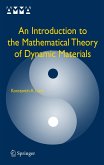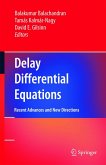Mathematical treatment to properties of dynamic materials, material substances whose properties are variable in space and time are examined in this book. This new edition emphasizes the differences between material optimization techniques in statics and dynamics. Systems with one spatial coordinate and time are used to illustrate essentials of temporal property change in this setting and prompt forthcoming extensions and technical improvements. Since the release of the first edition, a number of new results have created a more complete picture of unusual effects hidden in spatio-temporal material geometry. This renewed look has revealed a conceptually new mechanism of relaxation of material optimization problems in dynamics, which has led to additional resources for optimization previously concealed in the property layouts.
Dynamic materials are studied in this book from the following perspectives: ability to appear in dissimilar implementations, universality as formations that are thermodynamically open, and unusual effects supported by dynamic materials in mechanical and electromagnetic implementations. Special effects accompanying the wave propagation through material geometries in space-time are analyzed by dynamic (spatio-temporal) laminates for screening the extended domains. An extended classification is provided for activated and kinetic dynamic materials, based on the nonstandard exposition of Maxwell-Minkowski electrodynamics of moving bodies. Unique applications as well as fundamental optimization problems are listed within the discussion.
This book is intended for applied mathematicians interested in optimal problems of material design for systems governed by hyperbolic differential equations. It will also be useful for researchers in the field of smart metamaterials and their applications to optimal material design in dynamics.
Dynamic materials are studied in this book from the following perspectives: ability to appear in dissimilar implementations, universality as formations that are thermodynamically open, and unusual effects supported by dynamic materials in mechanical and electromagnetic implementations. Special effects accompanying the wave propagation through material geometries in space-time are analyzed by dynamic (spatio-temporal) laminates for screening the extended domains. An extended classification is provided for activated and kinetic dynamic materials, based on the nonstandard exposition of Maxwell-Minkowski electrodynamics of moving bodies. Unique applications as well as fundamental optimization problems are listed within the discussion.
This book is intended for applied mathematicians interested in optimal problems of material design for systems governed by hyperbolic differential equations. It will also be useful for researchers in the field of smart metamaterials and their applications to optimal material design in dynamics.
"It is competently written and provides a solid introduction to the mathematical analysis of dynamic materials and their optimization with some examples from mechanics and electromagnetics. The book will be of great interest for engineers and applied mathematicians interested in dynamic materials." (M. Cengiz Dökmeci, zbMATH 1383.74003, 2018)








